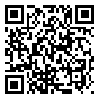BibTeX | RIS | EndNote | Medlars | ProCite | Reference Manager | RefWorks
Send citation to:
URL: http://journal.zums.ac.ir/article-1-952-en.html

 , Parisa Farnia1
, Parisa Farnia1 
 , Elaheh Tajedin *2
, Elaheh Tajedin *2 
 , Payam Tabarsi1
, Payam Tabarsi1 
 , Parvaneh Baghaei1
, Parvaneh Baghaei1 
 , MR Masjedi1
, MR Masjedi1 
 , Ali Akbar Velayati1
, Ali Akbar Velayati1 

2- Mycobacteriology Research Center (MRC), National Research Institute of Tuberculosis and Lung Disease (NRITLD), Shahid Beheshti University of Medical Sciences, Tehran, Iran ,
Background and Objective: Spoligotyping is a method based on 36bp Direct Repeat (DR) chromosomal loci polymorphism which is connected to one or two 35-41 bp spacer sequences. There are 94 different intra DR spacer sequences which are identified so far and only 43 of them are used as usual. Mycobacterium tuberculosis complex strains can be identified based on lacking or having these sequences. Materials and Methods: Spoligotyping test was carried out on 238 TB smear positive patients. Primary separation of mycobacterium strains was done through Petrof 4% method and Lowenstein Jensen (LJ) media. Biochemical tests such as Niacin test/Catalase activity/Nitrate reduction were done in order to identify the strains. Drug sensitivity to INH (0.2Mg/ml)/ RIF (40Mg/ml)/ STM (10Mg/ml) and ETBl (2Mg/ml) identified by proportional method and according to that, the strains were divided into three groups: sensitive, multi drug resistance (MDR) and non MDR. Then DNA was extracted by CTAB method from the positive colonies. Sequences were amplified by PCR and after denaturizing, hybridization with Streptavidine peroxidase enzyme was performed by Line reverse blot method. Radiography was done after adding the Luminoscense and membrane onto the X-ray films. Results: Serotypes were divided into 9 groups (Beijing/ CAS1/ Haarlem / U/ T2/ T1/ EAI3/ EAI2 and CAS2). Most of the strains were from Haarlem (27%) and CAS1 (25%) groups. Two strains were also identified in this method that belonged to Mycobacterium bovis. Conclusion: Spoligotyping method is an easy, rapid and sensitive test in order to identify Mycobacterium tuberculosis complex strains.
Received: 2009/10/22 | Accepted: 2014/06/26 | Published: 2014/06/26
| Rights and permissions | |
 |
This work is licensed under a Creative Commons Attribution-NonCommercial 4.0 International License. |


